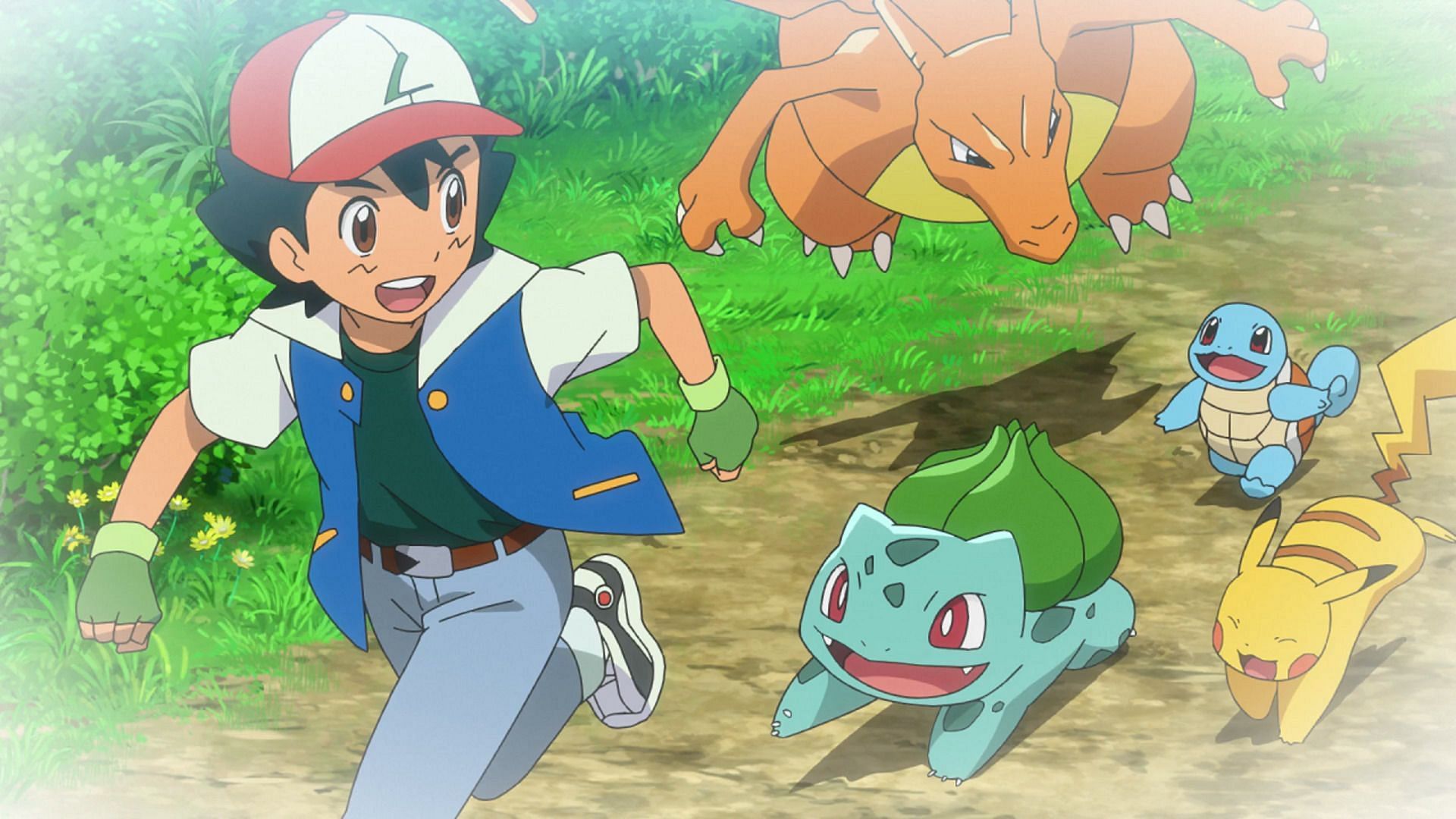There's a quiet strength in the stories of people who truly live off the land, those who face the everyday ups and downs with a steady hand. We are talking about folks like Ash Trevino, a person whose experiences, while not directly detailed in every public record, echo the challenges and simple pleasures of life connected to the wide-open spaces. This account pulls from general observations and common situations, drawing a little inspiration from various snippets of life out there, like what you might hear on a local forum or from a neighbor sharing their day.
So, you know, it's almost like piecing together a picture from different small glimpses, rather than having a full, clear photograph. The details of Ash Trevino's path are imagined here to give a sense of the sort of daily happenings that shape someone living on a piece of ground, whether it's dealing with the natural world or the occasional tricky service call. It's about the spirit of someone who handles what comes their way, using what they know and learning along the way, too.
This telling of the Ash Trevino story is a way to look at the practical side of ranch life, the kind where you might be asking for advice on how to handle a nuisance animal one day, and then figuring out the best wood for a project the next. It's a blend of resilience and resourcefulness, showing how a person might manage the many small tasks that come with caring for a property, as a matter of fact.
Table of Contents
- The Person Behind the Name - Ash Trevino's Beginnings
- Ash Trevino's Personal Details
- What Challenges Did Ash Trevino Face on the Ranch?
- Dealing with Nature's Surprises - The Ash Trevino Story of Resilience
- How Did Ash Trevino Approach Property Care?
- Maintaining the Land - A Chapter in the Ash Trevino Story
- What Kind of Community Support Shaped the Ash Trevino Story?
- Finding Solutions Together - The Collaborative Ash Trevino Story
- The Ash Trevino Story - Looking Ahead
The Person Behind the Name - Ash Trevino's Beginnings
Ash Trevino, a name that brings to mind the strength of wood and the deep roots of a family, has a personal tale that's pretty much tied to the land. Born and raised in a part of Texas where the trees stand tall and the rivers flow wide, Ash grew up with a deep respect for the natural world. From a young age, it was clear that Ash had a knack for understanding how things worked, whether it was the way a certain tree grew or the subtle signs of wildlife moving through the brush. This early life, you know, set the stage for everything that came later.
The family property, a sprawling piece of ground with a mix of woods and open fields, was Ash's first classroom. Learning about different kinds of trees, like the sturdy ash, the pliable maple, or even the quick-growing bamboo, was just part of daily life. There was also the hardy bois d'arc, a wood known for its toughness, which really stood out. Ash learned a lot about what makes wood strong, and how to use it right. These early experiences, actually, taught Ash many things that would prove useful in the years to come.
Ash's connection to the land wasn't just about farming or ranching; it was about truly living with the cycles of nature. There was always something to observe, something to learn. This background, with its focus on practical knowledge and hands-on experience, shaped Ash into the kind of person who could tackle a problem head-on, or, you know, figure out a clever way around it. It’s a story of growing up with the sun on your face and dirt on your hands, which, in a way, is a very real kind of education.
Ash Trevino's Personal Details
| Full Name | Ash Trevino |
| Occupation | Ranch Owner, Land Manager |
| Location | East Texas (near Houston/Conroe/Huntsville areas) |
| Interests | Wildlife management, sustainable land care, community forums, outdoor activities |
| Key Traits | Resourceful, resilient, community-minded, practical |
What Challenges Did Ash Trevino Face on the Ranch?
Life on a sizable piece of land, as many know, is never without its little complications. For Ash Trevino, who had taken over the family property some time ago, the daily routine often brought unexpected tasks. One of the more persistent issues involved the local beaver population. These busy creatures, while fascinating, had a tendency to cause quite a bit of trouble near the pond. Ash had noticed a tree down right by the water, pretty much as soon as the property changed hands, and that was just the start. The beavers were, in a way, making a real mess of things, altering the flow of water and felling trees that were important for the landscape.
Then there were the roads. Keeping the ranch roads in good shape was a constant effort, especially after a good rain. Ash often thought about the best materials for these paths, looking for something that would hold up well. There was talk, you know, about using crushed iron ore, a pretty sturdy material, for places like ranch roads. Finding a reliable source for something like that, especially in the wider North Houston, Conroe, or Huntsville area, was always a topic of discussion. It was a practical concern that needed a practical answer, like your typical landowner might face.
Beyond the natural world, there were also the occasional service issues that popped up. Ash had a bit of a situation with a local HVAC setup, run by a guy who, well, let's just say the service didn't quite meet expectations. These kinds of experiences, where you're trying to get a job done right and it just doesn't go smoothly, can be pretty frustrating. It made Ash consider, very seriously, what steps one might take after a less-than-ideal service experience, perhaps even looking into official channels for advice on how to proceed.
Dealing with Nature's Surprises - The Ash Trevino Story of Resilience
Ash's approach to these problems was usually a mix of observation and seeking good advice. For the beavers, it wasn't just about removing them, but about understanding their patterns and finding ways to protect the trees without causing too much disruption. This meant spending time watching, learning, and then acting. It’s a bit like a chess game with nature, where you have to think several moves ahead, you know. Ash had to be pretty resilient to keep up with it all.
When it came to the roads, Ash would often chat with other landowners or look through online forums. There's a lot of collective wisdom out there, with people sharing what worked for them, like what kind of material held up best or who had a good supply of crushed iron ore. It's about finding those little bits of knowledge that make a big difference. Ash understood that sometimes the best solutions come from talking to others who have been through similar things, which is pretty much how a lot of good ideas spread.
And for the service issues, Ash was the type to dig in and figure out the right way to handle things. If a job wasn't done right, there was a process, and Ash was prepared to follow it. This meant possibly looking into how to file a complaint with the Texas Department of Licensing and Regulation, just to make sure things were handled properly. It’s about holding people accountable and ensuring that services are delivered as promised, which is a fairly common concern for anyone dealing with contractors.
How Did Ash Trevino Approach Property Care?
Ash Trevino's way of looking after the property was pretty holistic, meaning it considered all parts of the land and its creatures. It wasn't just about fixing problems as they came up; it was about trying to keep things in good shape for the long haul. For instance, when it came to managing wildlife, Ash was always curious about how to do it effectively and ethically. There was some thought, you know, given to things like deer attractants, not just for hunting, but also for observation or for guiding animal movement on the property. It was about balance, keeping the ecosystem healthy.
The woods on the property were a big part of Ash's focus. Knowing about different wood types, like the common ash, the sturdy maple, or even the strong bamboo, was a real asset. Ash often wondered about using harder woods, like bois d'arc, for specific purposes, maybe for fence posts or other structures that needed to last a very long time. This interest in wood wasn't just academic; it was practical, tied to the needs of the ranch. It’s about making the most of what you have, and what grows around you, too.
And then there was the ongoing need for firewood, especially as winter approached. Ash was always on the lookout for a good supply, whether it was seasoned wood that was already split or logs that could be cut and split on site. It’s a pretty fundamental part of living in a colder climate, keeping warm, and Ash made sure to plan ahead for it. This kind of preparation, you know, is a big part of what it means to be a good steward of the land.
Maintaining the Land - A Chapter in the Ash Trevino Story
The way Ash maintained the land was really about being proactive. Instead of waiting for things to go wrong, Ash tried to foresee issues and address them early. This meant regular checks on the fences, keeping an eye on water sources, and making sure the animal populations were balanced. It's a bit like a constant conversation with the land, listening to what it needs and responding thoughtfully. Ash, quite honestly, put a lot of thought into these things.
When it came to the materials used on the property, Ash always looked for quality and durability. Whether it was the type of wood for a new project or the crushed iron ore for the roads, the goal was to make choices that would stand the test of time and weather. This practical mindset, you know, saved a lot of trouble in the long run. It's about building things to last, which is a pretty solid way to go about things on a ranch.
And for the firewood, Ash had a system. It wasn't just about getting wood; it was about getting the right kind of wood, whether it was a mix of seasoned and green, and making sure it was ready for use. Sometimes, it involved cutting logs and splitting them personally, a task that, really, connects you directly to the land and its resources. This part of the Ash Trevino story is about the steady, consistent work that keeps a place running smoothly.
What Kind of Community Support Shaped the Ash Trevino Story?
Ash Trevino was never one to go it alone, especially when it came to figuring out solutions for the ranch. A big part of Ash's way of doing things involved tapping into the collective wisdom of others. This often meant spending time on online forums, where people shared all sorts of advice, from the best ways to use a deer attractant to where to find specific materials like crushed iron ore. These forums were a real resource, offering insights from folks who had faced similar challenges, which is pretty useful.
The online community was more than just a place for questions and answers; it was a spot where people genuinely helped each other out. Ash would see discussions moderated by a group of experienced individuals, people like 'bigbob_ftw' or 'chickenman,' who kept things on track and made sure good information was shared. It was a place where you could learn about everything from fishing tips to hunting strategies, or even just general property management. This kind of shared knowledge, you know, makes a big difference when you're trying to figure things out.
Beyond the online world, Ash also valued direct conversations with neighbors and local experts. Whether it was talking about the best way to deal with a beaver problem or getting recommendations for a reliable HVAC outfit, these personal connections were very important. It’s about building a network of trust and support, which, in a way, is essential for anyone living and working in a close-knit community. Ash understood that sometimes the best advice comes from someone who lives right down the road.
Finding Solutions Together - The Collaborative Ash Trevino Story
The collaborative spirit really shines through in Ash Trevino's story. When facing a new problem, Ash’s first thought was often, "Has anyone else dealt with this?" This mindset led to asking questions, listening carefully, and being open to different ideas. It’s not about having all the answers yourself; it’s about knowing where to find them, and that often means reaching out to others. This willingness to learn from others, you know, is a strong trait.
For example, when considering deer attractants, Ash might ask, "What is the best way to put it out?" This isn't just a simple question; it’s a request for practical, real-world experience. The responses, often from seasoned hunters or wildlife enthusiasts, would give Ash a better sense of what to expect and how to proceed. It’s a very practical way to gather information, and it shows a real desire to do things effectively.
Similarly, when a situation with a local service provider didn't go as planned, Ash might look for advice on how to handle it. Asking about the process for filing a complaint with a body like the Texas Department of Licensing and Regulation shows a commitment to fair dealings and proper procedures. It’s about seeking clarity and ensuring that things are done right, not just for oneself, but for the community as a whole, too. This collaborative problem-solving is a pretty big part of the Ash Trevino story.
The Ash Trevino Story - Looking Ahead
The story of Ash Trevino, though built from small, everyday moments, paints a picture of a person deeply connected to their surroundings and to the people who share it. It's a tale of handling the natural world'



